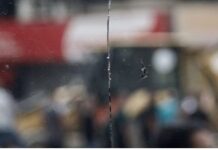Willy Lowry
The National / June 25, 2024
The Lebanese militia’s capabilities have increased hugely since last conflict, analysts say.
An all-out war between Israel and Hezbollah on the Israeli-Lebanese border will be catastrophic for both sides and much worse than their previous war in 2006, Israeli military analysts have warned.
For nearly 20 years, memories of the 2006 Israel-Lebanon war have helped to deter Israel and Hezbollah from engaging in the same levels of hostilities.
But eight and half months of escalating tit-for-tat, cross-border exchanges has the two sides teetering on the brink of another full-scale war.
Israeli military analysts fear this would be far more deadly than the 34-day conflict in 2006, in which more than 120 Israeli soldiers were killed and 44 civilians. About 1,200 Lebanese were killed, including an estimated 250 members of Hezbollah, the rest civilians.
On July 12, 2006, Hezbollah fighters attacked two army vehicles that were patrolling near the border area. They killed three Israeli soldiers and two others captive.
Israel launched a large-scale military response and sent troops into Lebanon.
They struck Hezbollah military positions as well as important infrastructure including Beirut’s airport, causing billions of dollars in damage and leaving some parts of the capital, including Hrat Hreik neighbourhood, in ruins.
About 5,000 targets were hit by the Israeli air force in the 34 days of fighting.
Hezbollah fired nearly 4,000 rockets towards Israel, at the time an unprecedented amount.
The militant group showed itself to be a capable adversary and the conflict ended with a ceasefire agreement brokered by the UN Security Council.
Hezbollah has spent the better part of two decades building an arsenal that eclipses its capabilities in 2006.
According to the Alma Research and Education Centre, which focuses on security issues along Israel’s northern border including with Lebanon, the Iran-backed organization has an estimated 50,000 fighters and an artillery that consists of 150,000 mortars, 65,000 rockets, 5,000 missiles that can hit targets up to 200km away and 5,000 rockets that could strike anywhere in Israel.
“In 2024 they could fire in one day, literally, 10,000 different projectiles, mortars, missiles and rockets, suicide drones,” said Miri Eisin, a retired colonel in the Israeli military and senior fellow at the International Institute for Counter Terrorism at Reichman University.
Eisin fears that even if the Israeli military is brutally efficient, Hezbollah will still be able to cause more damage than in the past. As an example of how severe a new Israeli bombing campaign could be compared to 2006, Israel said it had bombed 34,000 targets in Gaza up until February.
That total is likely far higher now – but was already about six times the bombing total for the 2006 Lebanon war.
“Let’s say we [Israel] are really good and we destroy 90 per cent [of incoming rockets], 10 per cent of that gets through in 2024 is nothing like October 7, 2023 and it is nothing like 2006,” she told The National. “It’s going to be gross and there are going to be a lot of casualties.”
She fears “hundreds if not thousands’ of Israelis will be injured and killed throughout the country. “They’re going to fire all over the place, and most of them we’ll intercept. But because they have such heavy payloads, the ones that are going to get through are going to kill a lot.”
In the weeks following Hamas’s October 7 attack on southern Israel, in which the militant group killed about 1,200 people and kidnapped an estimated 240, the Israeli government ordered the evacuation of 43 villages near the Lebanese border, in effect creating a buffer zone inside Israel from Hezbollah attacks.
Soldiers and reservists now make up the majority of people in the small communities that populate the north.
Many feel like they are already at war.
“We’ve been at war with Hezbollah for several months already,” Avraham Levine, a spokesman for Alma, said.
Mr Levine, who lives in the Golan Heights, said many people feel a full-scale war may be the only option to make people feel the area is safe enough to inhabit.
“I think many people want it resolved one way or another,” Mr Levine told The National. “If you can’t keep me safe, then I’ll go elsewhere. If you want to bring me back home, then guarantee my safety and I don’t see many other ways.”
The two sides have been sabre rattling for several weeks now, with ominous rhetoric, but on Tuesday, Israel’s National Security Adviser Tzachi Hanegbi appeared to tone down his messaging, saying that Israel still prefers a diplomatic solution in the north.
This comes as allies including the US have stressed the importance of trying to avoid a full-scale conflict on two fronts.
On Monday, US Secretary of State Antony Blinken met Israel’s Defence Minister Yoav Gallant and “underscored the importance of avoiding further escalation of the conflict and reaching a diplomatic resolution that allows both Israeli and Lebanese families to return to their homes”, the State Department said after the two-hour meeting in Washington.
German Foreign Minister Annalena Baerbock warned that war between the two would have “disastrous consequences”. She was in Israel on Tuesday, where she met Israeli officials before an expected trip to Lebanon.
Levine is not hopeful that diplomacy will work.
“I’m not looking for a war,” he said. “But a piece of paper between Israel and Lebanon does not affect Hezbollah,” he said, referring to the fact the militant group holds a disproportionate amount of power and influence in Lebanon.
Like Eisin, Levine fears an all-out war will be “10 times” worse than in 2006.
“This war is not against Hamas currently, and it won’t be a war against Hezbollah. What we saw on October 7 is a surprise. It’s the opening scene of Iran-Israel.”
Willy Lowry – Senior US Correspondent












